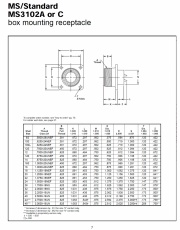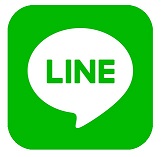Guide to Selecting a Connector
In selecting a connector, it first must be
determined if a non-environmental 97
A or B Series 5015 type is required or if
an environmental MS-5015 Class E, F,
or R type* is required.
If determined that the general duty,
non-environmental 97 series is the
choice - then this catalog is appropriate
to your needs
The following 8 steps apply to formulation
of a part number.**
How many wires are you
going to connect?
What gauge?
These two questions are important,
because they indicate which insert you
need. There are literally hundreds to
choose from.
The insert arrangements for solder
contact connectors are illustrated on
pages 6-11. The inserts most often
used are highlighted on these pages.
Here’s an example of how to choose
an insert arrangement. Say you want to
connect eight 16-ga. wires, - first find
the section of arrangements containing
8 contacts. Insert number 20-7 is
the one you want because it contains
eight 16-ga. contacts and it is one of
the most often used. The one you
choose might depend on your space or
voltage requirements. The voltage
capacity of each insert is listed under
its diagram.
If you have more than one wire size
to connect, the method is essentially
the same. Actually, the insert configurations
for multiple-size wires are a lot
more flexible than they appear. That’s
because you can always solder a
smaller wire to a larger contact. However,
soldering a large wire to a small
contact isn’t recommended because of
size and current requirements.
What if several identical
connectors have different
functions?
Here’s a situation to watch out for. You
have four identical receptacles on a
panel. One carries high current loads.
The others have low current functions.
A plug mated with the wrong receptacle
(cross-mating) could ruin your valuable
equipment.
To avoid cross-mating, you can
order identical inserts positioned in
both the plugs and receptacles at various
angles from standard. These variations
from standard position are called
alternate insert positions, and are
described on page 12.
What kind of receptacle do
you need?
For Wall Mounting Use a wall receptacle,
type 3100. The elongated back of
this receptacle extends through thick
wall material. It is threaded to accept
standard hardware fittings.
For Unmounted Applications Use
the cable receptacle, type 3101.
For Box or Panel Mounting Use the
box receptacle, type 3102. This receptacle’s
back is short to conserve space.
It is not threaded on the back end and
is used when no accessories such as
clamps are needed.
What kind of plug do youneed?
For ordinary situations The straight
plug, type 3106 meets most connector
requirements. However . . .
when space is critical you may want
to consider using an angle plug, type
3108. This type plug lets the cable
enter your equipment at a right angle.
Do you need a plug with a
Solid or Split back shell?
You can get both straight and angle
plugs in solid or split back shell
designs. With the solid shell you have
greater strength and you save space.
On the other hand, the split shell
design lets you quickly inspect the solder
terminals when you need to. This
feature could be important if you’ll be
subjecting the connector to rough handling
and heavy use.
The designation to use for solid
shell construction is the letter A. This
designation letter goes immediately
after the main shell type number: for
example, 3106A or 3108A.
The designation for split shell construction
is the letter B; for example, 3106B
or 3108B.
Because of application, receptacles
are made in solid backshell construction
only. Their designation is 3100A,
3101A. (See how to order for solder
contact connectors, page 19.
Which connector gets the
socket? - the receptacle or
the plug?
You’re at the point where you designate
which inserts are used with which
shells. Either pin or socket inserts can
be used with plugs or receptacles.
Here’s a good rule of thumb. Order
the sockets for the connector at the
“hot” side of the circuit. By having sockets
at the power source, there’s little
chance that a wayward finger or screwdriver
will short the circuit or cause personal
injury.
The designation for sockets is simply
S in a part number, following the
insert code number. For pins, the designation
is P. Therefore, the 20-7P
insert would have pin contacts, while
the 20-7S insert would have socket
contacts.
What type of plating is preferred?
If you prefer the standard olive cadmium,
non-reflective, electrically conductive
finish, then no suffix number is
required. Other plating variations are
available, including environmentally
friendly zinc alloy. See how to order
instructions for the various plating finishes
offered for 97 Series solder connectors
on page 19.
Do you need any
accessories?
Accessories - cable clamps, protection
caps and chains, conduit adapters, and
panel gaskets are shown on pages 33-
39.
* If an environmental type MIL-5015 E, F or R Class is required, then the
catalog that should be consulted is 12-020, MS/Standard MIL-5015
Cylindrical Connectors. See www.amphenol-industrial.com for on-line
catalogs or contact Amphenol, Sidney, NY.
** These steps are for solder type connectors which are described in
detail on pages 3-19. If a crimp type connector is needed, the same
steps apply, however, you should consult pages 20-29 for details on 97
Series connectors with crimp contacts.

5599653

 2024/5/19 上午 04:49:43
2024/5/19 上午 04:49:43












